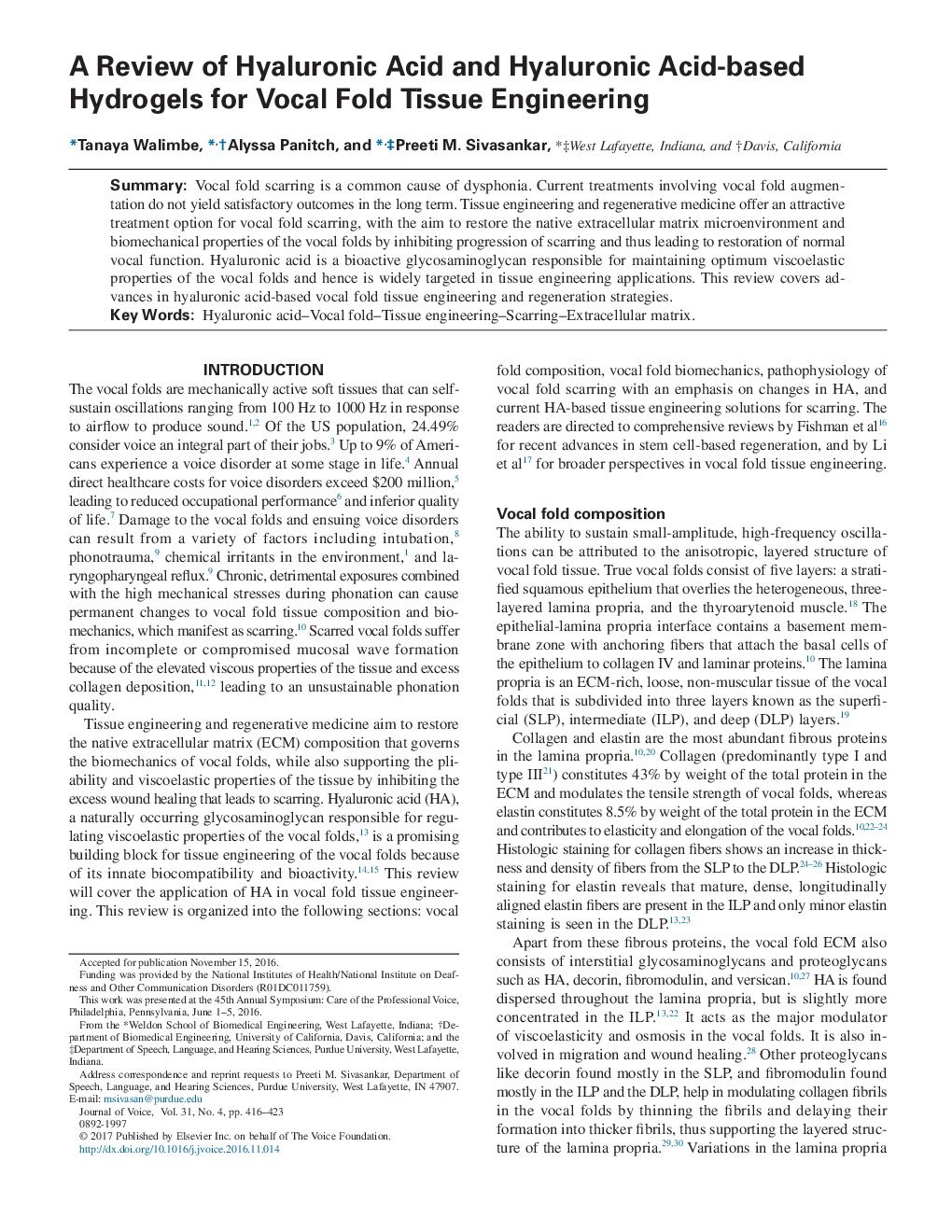| Article ID | Journal | Published Year | Pages | File Type |
|---|---|---|---|---|
| 5124163 | Journal of Voice | 2017 | 8 Pages |
SummaryVocal fold scarring is a common cause of dysphonia. Current treatments involving vocal fold augmentation do not yield satisfactory outcomes in the long term. Tissue engineering and regenerative medicine offer an attractive treatment option for vocal fold scarring, with the aim to restore the native extracellular matrix microenvironment and biomechanical properties of the vocal folds by inhibiting progression of scarring and thus leading to restoration of normal vocal function. Hyaluronic acid is a bioactive glycosaminoglycan responsible for maintaining optimum viscoelastic properties of the vocal folds and hence is widely targeted in tissue engineering applications. This review covers advances in hyaluronic acid-based vocal fold tissue engineering and regeneration strategies.
